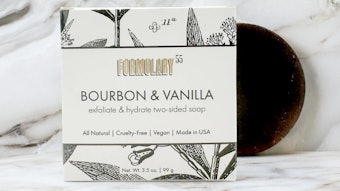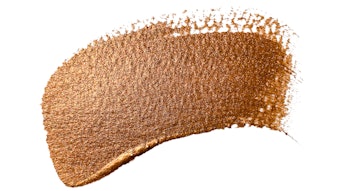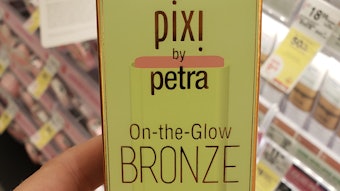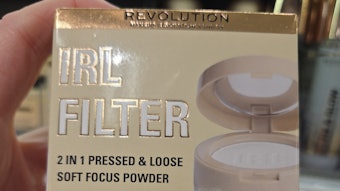
Read the full article in the November/December 2021 digital edition. . .
Author’s note: This article covers solvent-based nail polish that dries by evaporation, not gel polish, which contains different ingredients and converts from a gel to a solid when exposed to UV light.
Today’s health-conscious society has embraced the ideas of clean, green, vegan, cruelty-free, non-toxic and toxin-free. Even cosmetics advertise these claims. As most readers will know, consumers have become more aware of the ingredients in cosmetic products and tend to avoid those they believe—or are told to believe—are harmful or potentially harmful. For example, products are promoted as being free from parabens, sulfates and other ingredients, which consumers then think they should avoid.
This trend has become especially noticeable in nail polish. Numerous websites and blogs even rank the best non-toxic nail polishes in terms of what they don’t contain. These include Byrdie,1 I Read Labels for You2 and This Organic Girl.3 Magazines such as Glamour also publish articles on “non-toxic” nail polish.4
It has become somewhat of a competition to see how many ingredients a nail polish can claim to be free of and the numbers have increased:
3-free: No formaldehyde, toluene or dibutyl phthalate;
4-free: 3-free and no formaldehyde resin;
5-free: 4-free and no camphor; and
10-free: 5-free and no xylene, parabens, fragrances, phthalates or animal ingredients.
Specific examples include L’Oréal’s essie brand nail polish, which on its website5 claims to be 100% vegan and 8-free—i.e., no formaldehyde, toluene, dibutyl phthalate, formaldehyde resin, camphor, ethyl tosylamide, xylene or triphenyl phosphate.
In relation, Coty’s Sally Hansen brand has trademarked, on its latest nail polish,6 the phrase, “Good. Kind. Pure.” It also claims to be 16-free, omitting: formaldehyde, formaldehyde resin, toluene, xylene, acetone, phthalates (including DBP), camphor, parabens, ethyl tosylamide, triphenyl phosphate (TPP), animal-derived ingredients, styrene, bisphenol A, glycol ethers of series E (glycol ethers derived from ethylene oxide), nonylphenol ethoxylate and sulfates.
Undesired Ingredients
The removal of certain ingredients such as dibutyl phthalate, toluene and to a certain degree, formaldehyde resin, has validity. Dibutyl phthalate may damage an unborn child, is suspected of damaging fertility [Danger Reproductive toxicity]7 and is a suspected endocrine disruptor.8 Toluene poses inhalation issues,9 especially in nail salons,10, 11 and formaldehyde resin has been associated with contact dermatitis.12, 13
Formaldehyde: Other ingredients raise questions as to whether products should claim to be free of them. Formaldehyde, for one, is added to nail hardeners but not added to nail polishes. Any formaldehyde present in a nail polish would most likely come as residual formaldehyde from tosylamide formaldehyde resin, which is made by a condensation reaction between formaldehyde and toluene sulfonamide. A study conducted in 1997 found that the more toluene sulfonamide resin (TFSR) a polish contained, the higher its formaldehyde content.14
Xylene: However, a number of X-free ingredients are chemicals that may have been used at one time but are no longer, or are chemicals not even used in nail polish. Xylene, for example, is rarely used today. The same 1997 study found that at that time, only one in 20 nail polishes contained xylene.14 One reason xylene would not be used in nail polish is that its evaporation rate is much slower than that of ethyl acetate, butyl acetate, propyl acetate and even toluene, so it would dry too slowly, making the nail polish too soft for too long.
. . .Read more in the November/December 2021 digital edition. . .
References
- Rud, M. (2020, May 14). 14 Non-toxic nail polishes for manicure perfection. Available at https://www.byrdie.com/best-non-toxic-nail-polishes-4777387
- Webb, I. (2021). Nail polish rating list E-book. Available at https://ireadlabelsforyou.com/nail-polish-rating-list/
- Fennessy, L. (2021, Jan 26). The best nontoxic nail polish brands (and how to choose the one for you). Available at https://thisorganicgirl.com/best-nontoxic-nail-polish-brands/
- Schallon, L. (2020, Feb 17). 13 Healthy, non-toxic nail polishes that don’t chip immediately. Available at https://www.glamour.com/gallery/best-non-toxic-nail-polishes
- Essie website (accessed 2021, Sep 27). Essie takes a stance for transparency in nail polish ingredients. Available at https://www.essie.com/ingredients
- Sally Hansen (accessed 2021, Sep 27). New! Good. Kind. Pure. Available at https://www.sallyhansen.com/en-us/nail-color/nail-color/pure
- PubChem (accessed 2021, Sep 27). Compound summary. Dibutyl phthalte. Available at https://pubchem.ncbi.nlm.nih.gov/compound/Dibutyl-phthalate#section=GHS-Classification
- Grabenhofer, R. (2019, Jul). Phthalates flagged for endocrine disruption. Available at https://www.cosmeticsandtoiletries.com/regulatory/region/europe/Phthalates-Flagged-for-Endocrine-Disruption- 512902281.html
- ATSDR (accessed 2021, Sep 27). Medical management guidelines for toluene. Available at https://wwwn.cdc.gov/TSP/MMG/MMGDetails.aspx?mmgid=157&toxid=29
- Ceballos, D.M., et al., (2019, May 15). Biological and environmental exposure monitoring of volatile organic compounds among nail technicians in the greater Boston area. Available at https://www.ncbi.nlm.nih.gov/pmc/articles/PMC6565444/
- Quiros-Alcala, L., Pollack, A.Z., Tchangalova, N., SeSantiago, M. and Kavi, L.K.A. (accessed 2021, Sep 27). Occupational exposures among hair and nail salon workers: A scoping review. Summary available at https://pubmed.ncbi.nlm.nih.gov/31541357/
- Warshaw, E. M., et al., (2020). Contact dermatitis associated with nail care products: Retrospective analysis of North American contact dermatitis group data, 2001–2016. Dermatitis 31(3) 191-201; summary available at https://journals.lww.com/dermatitis/Abstract/2020/05000/Contact_Dermatitis_Associated_With_Nail_Care.5.aspx?context=LatestArticles
- Harrison, N. (2018, Nov). The nail cosmetics allergy epidemics: How can nail varnish harm you? Available at https://rocprivateclinic.com/the-nail-cosmetics-allergy-epidemics-how-can-nail-varnish-harm-you/
- Sainio, E.-l., et al., (1997, Nov). Allergenic ingredients in nail polishes. Abstract available at https://onlinelibrary.wiley.com/doi/abs/10.1111/j.1600-0536.1997.tb00189.x











